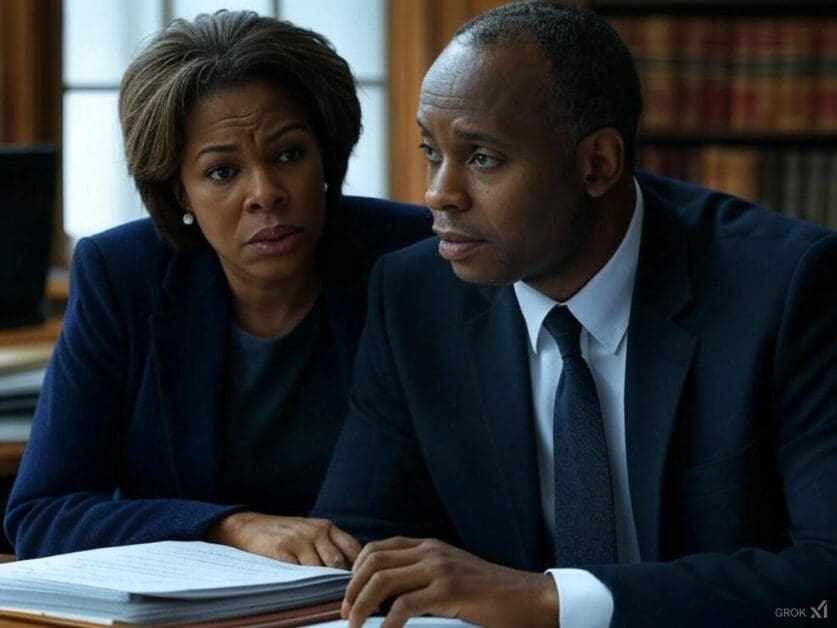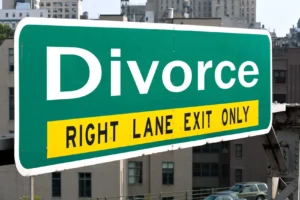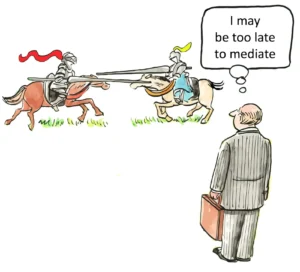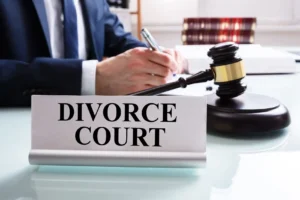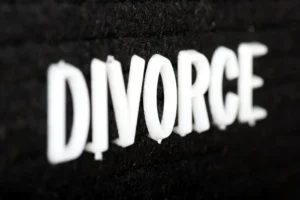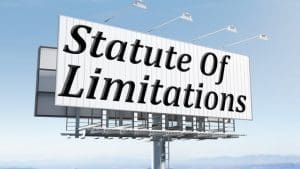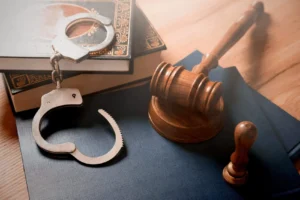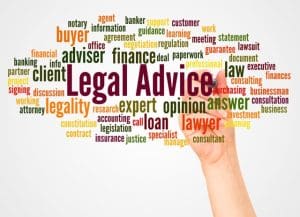Premises Liability: When Property Owners Are Responsible
In the realm of personal injury law, premises liability stands as a critical concept that determines when property owners can be held legally accountable for injuries occurring on their premises. This area of law encompasses a wide range of scenarios, from slip and fall accidents to inadequate security incidents, and plays a crucial role in ensuring public safety and fair compensation for those harmed due to negligent property maintenance.
At its core, premises liability is founded on the principle that property owners owe a duty of care to individuals who enter their property. This duty varies depending on the status of the visitor and the circumstances of their presence. Understanding the nuances of premises liability is essential for both property owners seeking to mitigate risks and individuals who have suffered injuries on someone else’s property.
The concept of premises liability has evolved significantly over time, shaped by legal precedents, changing societal norms, and advancements in property management technologies. Today, it encompasses not only traditional concerns like maintaining safe walking surfaces but also modern issues such as cybersecurity in smart buildings and environmental hazards exacerbated by climate change.
One of the fundamental aspects of premises liability is the classification of visitors. Legally, visitors are typically categorized into three groups: invitees, licensees, and trespassers. Each category is afforded different levels of protection under the law, with invitees generally receiving the highest duty of care from property owners.
Invitees are individuals who enter the property for the benefit of the owner or as members of the public when the property is open to the public. This category includes customers in stores, patients in hospitals, and students in schools. Property owners owe invitees the highest duty of care, which includes regularly inspecting the property for hazards, promptly addressing known dangers, and warning visitors of any risks that cannot be immediately rectified.
Licensees enter the property for their own purposes but with the owner’s permission. This might include social guests or salespeople. While property owners owe licensees a duty of care, it is generally less stringent than that owed to invitees. Owners must warn licensees of known dangers that may not be obvious but are not required to actively inspect for hazards.
Trespassers, who enter the property without permission, are generally owed the least duty of care. However, property owners cannot willfully or wantonly cause harm to trespassers and may have additional duties if the trespassers are children or if the owner is aware of frequent trespassing.
Understanding these classifications is crucial in premises liability cases, as they often form the basis for determining the extent of a property owner’s legal obligations. However, it’s important to note that some jurisdictions have moved away from these rigid classifications, instead adopting a uniform standard of reasonable care for all lawful visitors.
The concept of foreseeability plays a significant role in premises liability cases. Property owners are generally expected to anticipate and address reasonably foreseeable risks. This means taking proactive measures to prevent accidents that a reasonable person would expect could occur given the property’s condition and use.
For example, a grocery store owner should foresee that spills in aisles could lead to slip and fall accidents and thus implement regular inspection and cleaning protocols. Similarly, a landlord in a high-crime area should anticipate the potential for criminal activity and take appropriate security measures to protect tenants and visitors.
The duty to warn is another critical component of premises liability. When hazards exist that cannot be immediately remedied, property owners have an obligation to provide adequate warnings to visitors. This might involve placing caution signs near wet floors, cordoning off dangerous areas, or verbally informing guests of potential risks.
In assessing premises liability claims, courts often consider several factors:
- The purpose for which the visitor entered the property
- The reasonableness of the property owner’s actions in maintaining the premises
- The foreseeability of the harm that occurred
- The visitor’s own actions and whether they contributed to the injury
These factors help determine whether a property owner breached their duty of care and can be held liable for injuries sustained on their premises.
Negligence is at the heart of most premises liability cases. To establish negligence, the injured party (plaintiff) must prove four elements:
- The property owner owed a duty of care to the visitor
- The property owner breached that duty
- The breach directly caused the visitor’s injury
- The visitor suffered actual damages as a result
Proving these elements often requires substantial evidence, including photographs of the hazardous condition, witness testimonies, surveillance footage, and expert opinions on property maintenance standards.
One common type of premises liability case is the slip and fall accident. These incidents can occur due to various hazards, such as wet floors, uneven surfaces, poor lighting, or obstacles in walkways. Property owners are expected to address these hazards promptly or provide adequate warnings to prevent accidents.
Another significant area of premises liability is inadequate security. This becomes particularly relevant in cases where criminal acts occur on the property, and it can be shown that the property owner failed to provide reasonable security measures. Examples might include a lack of proper lighting in parking lots, broken locks on apartment building entrances, or insufficient security personnel in high-risk areas.
Dog bites and animal attacks also fall under the umbrella of premises liability. Property owners who keep animals on their premises may be held liable for injuries caused by those animals, especially if they were aware of the animal’s dangerous propensities.
In recent years, premises liability has expanded to include new areas of concern. For instance, the rise of cybersecurity threats has led to questions about property owners’ responsibilities in protecting visitors’ digital information when using public Wi-Fi networks or smart building systems.
Environmental hazards have also become a growing concern in premises liability cases. Issues such as toxic mold, asbestos exposure, or contaminated water supplies can lead to significant liability for property owners who fail to address these dangers adequately.
The COVID-19 pandemic has introduced new considerations in premises liability, raising questions about property owners’ duties to implement and enforce safety measures to prevent the spread of infectious diseases. This has led to debates about the extent of a property owner’s responsibility in extraordinary circumstances and how to balance public health concerns with practical limitations.
Attractive nuisance is a doctrine within premises liability law that specifically addresses children who may be drawn to dangerous conditions on a property. This doctrine holds property owners to a higher standard of care when it comes to features that might attract children, such as swimming pools, construction sites, or abandoned vehicles. Owners are expected to take extra precautions to prevent access to these hazards, even if the children are technically trespassing.
The concept of comparative negligence often comes into play in premises liability cases. This principle recognizes that sometimes the injured party may bear some responsibility for their own injury. For example, if a person ignores clearly posted warning signs or engages in reckless behavior, their compensation may be reduced based on their percentage of fault in causing the accident.
Different states handle comparative negligence in various ways. Some follow a pure comparative negligence rule, where plaintiffs can recover damages even if they are 99% at fault, with their recovery reduced by their percentage of fault. Others use a modified comparative negligence system, which bars recovery if the plaintiff’s fault exceeds a certain threshold (often 50% or 51%).
The concept of constructive notice is crucial in many premises liability cases. This refers to the idea that a property owner should have known about a dangerous condition, even if they did not have actual knowledge of it. For example, if a spill in a supermarket aisle has been present for several hours, the store may be deemed to have constructive notice of the hazard, even if no employees actually saw it.
Statute of limitations is another important consideration in premises liability cases. These laws set a time limit within which a lawsuit must be filed after an injury occurs. The specific time frame varies by state and can also depend on the type of injury or the status of the injured party (e.g., different rules may apply for minors).
In some cases, property owners may attempt to limit their liability through waivers or disclaimers. While these can be effective in some situations, courts often scrutinize such agreements carefully, especially when they involve essential services or when there is a significant imbalance of power between the parties.
The concept of vicarious liability can extend responsibility in premises liability cases beyond just the property owner. For example, a property management company or a tenant in control of the premises may also be held liable for injuries that occur due to their negligence in maintaining the property.
Premises liability insurance is a crucial consideration for property owners. This type of insurance can provide protection against claims arising from injuries or damages that occur on the insured property. However, it’s important for property owners to understand the specifics of their coverage, including any exclusions or limitations.
In some jurisdictions, the doctrine of res ipsa loquitur (Latin for “the thing speaks for itself”) can be applied in premises liability cases. This legal principle allows the plaintiff to establish negligence based on the mere fact that an accident occurred, in situations where the accident would not typically happen without negligence and the defendant had exclusive control over the circumstances that led to the injury.
The rise of short-term rentals through platforms like Airbnb has introduced new complexities into premises liability law. Questions arise about the responsibilities of homeowners who rent out their properties, the liability of the rental platforms themselves, and how traditional hospitality laws apply in these new contexts.
Accessibility is an increasingly important aspect of premises liability, particularly in light of the Americans with Disabilities Act (ADA) and similar state laws. Property owners, especially those operating public accommodations, must ensure their premises are accessible to individuals with disabilities. Failure to do so can result in not only premises liability claims but also civil rights violations.
The concept of open and obvious danger is often used as a defense in premises liability cases. This principle suggests that property owners are not liable for injuries caused by hazards that are so apparent that a reasonable person would be expected to notice and avoid them. However, the application of this defense can vary depending on the specific circumstances and jurisdiction.
Premises liability in commercial settings often involves additional considerations. For instance, businesses may have specific duties related to crowd control during sales events, maintaining safe conditions in parking lots, or ensuring the proper functioning of elevators and escalators.
In cases involving landlord-tenant relationships, premises liability can become complex. While landlords generally have a duty to maintain common areas and address known hazards, the extent of their responsibility for conditions within individual rental units can vary based on lease agreements and local laws.
The rise of smart buildings and IoT devices has introduced new dimensions to premises liability. Property owners may now face questions about their responsibility to protect against hacking of smart home systems, malfunctions in automated building controls, or privacy breaches through connected devices.
Climate change is increasingly impacting premises liability considerations. Property owners may face new responsibilities related to flood preparedness, wildfire mitigation, or extreme weather event planning. Failure to adapt to changing environmental conditions could potentially be seen as a breach of the duty of care.
In some cases, government entities may be involved in premises liability claims, such as accidents occurring on public property. These cases often involve additional complexities due to sovereign immunity doctrines and specific procedural requirements for claims against government bodies.
The field of premises liability continues to evolve, influenced by technological advancements, changing social norms, and new legal precedents. As our understanding of property rights and public safety develops, so too does the law’s approach to balancing the responsibilities of property owners with the rights of visitors.
One emerging trend in premises liability is the increasing use of surveillance technology and data analytics to monitor and manage property risks. While these tools can help property owners identify and address hazards more efficiently, they also raise questions about privacy and the extent to which owners are expected to utilize such technologies to fulfill their duty of care.
Another developing area is the concept of virtual premises liability, which considers the responsibilities of online platform owners for injuries or damages that occur in virtual spaces. As virtual and augmented reality technologies become more prevalent, legal frameworks may need to adapt to address new forms of “property” and the potential harms that can occur within them.
The growing awareness of mental health issues is also influencing premises liability law. There’s an increasing recognition that property owners may have some responsibility to consider the psychological well-being of visitors, particularly in environments like workplaces, schools, or healthcare facilities.
Sustainability and environmental responsibility are becoming factors in premises liability considerations. Property owners may face scrutiny over their environmental practices, with potential liability for issues such as improper waste disposal, use of harmful chemicals, or failure to implement eco-friendly measures when reasonably expected.
The concept of premises liability in shared spaces is evolving with the rise of co-working environments, communal living arrangements, and other shared-use properties. These situations can blur the lines of responsibility and require careful consideration of how liability is allocated among various parties.
As artificial intelligence and robotics become more integrated into property management, new questions arise about liability for accidents or injuries caused by automated systems. The legal framework will need to address issues of responsibility when AI makes decisions that impact visitor safety.
The increasing frequency of mass casualty events, such as shootings in public spaces, has led to discussions about the extent of property owners’ duty to protect against such occurrences. This has resulted in a reevaluation of security measures and emergency response protocols in various settings.
Premises liability in healthcare settings is receiving increased attention, particularly in light of healthcare-associated infections and other medical complications that may be attributed to the facility environment rather than direct medical care.
The concept of attractive nuisance is being reconsidered in the context of modern attractions like elaborate playground equipment, interactive public art installations, or outdoor fitness equipment in parks. Property owners and municipalities must balance the benefits of these features with the potential risks they may pose, especially to children.
As urban density increases, premises liability issues related to multi-use developments, vertical communities, and shared infrastructure are becoming more complex. The interconnected nature of these environments requires a nuanced approach to determining responsibility and liability.
The rise of experiential retail and entertainment venues introduces new premises liability considerations. Properties designed to provide immersive or extreme experiences must navigate the balance between creating exciting environments and ensuring visitor safety.
Premises liability in the context of natural disasters is an area of growing concern, particularly as climate change increases the frequency and severity of extreme weather events. Property owners may face scrutiny over their preparedness and response to such events, including evacuation plans and structural resilience.
The gig economy and sharing platforms continue to complicate premises liability, raising questions about the responsibilities of platform providers, service providers, and property owners in scenarios involving services like home repairs, pet-sitting, or personal training conducted on private property.
As biometric security measures become more common in both commercial and residential settings, premises liability law will need to address potential issues related to data security, privacy, and the reliability of these systems in maintaining safe environments.
The concept of premises liability in temporary or pop-up venues is gaining attention, particularly with the rise of seasonal markets, art installations, and event spaces. These temporary structures and environments present unique challenges in ensuring visitor safety and determining liability.
Premises liability in educational settings is evolving, particularly in light of concerns about school safety, bullying, and the impact of the physical environment on learning outcomes. Schools and universities face increasing scrutiny over their policies and practices related to student safety and well-being.
The intersection of premises liability and public health is becoming more prominent, especially in the wake of the COVID-19 pandemic. Property owners may face new expectations regarding air quality, sanitation practices, and the implementation of measures to prevent the spread of infectious diseases.
As renewable energy installations become more common on both commercial and residential properties, new premises liability considerations arise. Issues may include the safety of solar panel installations, wind turbines on private property, or battery storage systems.
The concept of premises liability in the context of self-driving vehicles is an emerging area of law. As autonomous vehicles become more prevalent, questions arise about the responsibilities of property owners in designing and maintaining parking areas, driveways, and other vehicle-accessible spaces to accommodate these new technologies.
Premises liability related to noise pollution is gaining attention, particularly in urban environments. Property owners may face liability for excessive noise levels that cause harm or discomfort to visitors or neighboring properties.
The integration of 5G technology and other advanced communications infrastructure into buildings and public spaces introduces new premises liability considerations. Issues may include potential health concerns, interference with other systems, or the reliability of emergency communication systems.
As vertical farming and urban agriculture become more prevalent, new premises liability issues emerge related to the unique risks associated with these innovative uses of space, including concerns about pesticide use, structural integrity, and food safety.
The concept of premises liability in the context of augmented reality games and applications is an emerging area of law. Property owners may face new challenges related to trespassing, distracted visitors, or unauthorized gatherings prompted by location-based AR experiences.
Premises liability in the context of aging infrastructure is becoming a more pressing concern, particularly in older urban areas. Property owners may face increased scrutiny over their maintenance and renovation practices, especially for historic or legacy structures.
The rise of smart cities and interconnected urban environments introduces new complexities to premises liability. As public and private spaces become more integrated through technology, questions arise about the allocation of responsibility for safety and security across these interconnected systems.
In conclusion, premises liability remains a dynamic and evolving area of law, adapting to new technologies, social changes, and emerging risks. As our built environment and societal expectations continue to change, so too will the legal frameworks that govern the responsibilities of property owners and the rights of those who enter their premises. Staying informed about these developments is crucial for property owners, legal professionals, and individuals alike to navigate the complex landscape of premises liability in the modern world.
Citations:
- https://www.hsdlawfirm.com/what-is-premises-liability/
- https://www.glassrobson.com/the-price-of-neglect-exploring-the-legal-consequences-of-premises-liability/
- https://www.bostonpersonalinjuryattorneyblog.com/emerging-trends-in-premises-liability-law/
- https://www.zlotolaw.com/blog/when-is-a-property-owner-responsible-for-an-injury/
- https://thenationaltriallawyers.org/article/what-is-premises-liability/
- https://www.trialguides.com/pages/resources-for-premises-liability-cases
- https://www.forthepeople.com/blog/understanding-premises-liability-what-you-need-know/
- https://www.drakelawgroup.com/post/understanding-premises-liability-when-property-owners-are-liable-for-injuries
- https://www.consumershield.com/injuries-accidents/premises-liability/cases
- https://simonlawpc.com/premises-liability/what-is-premises-liability/
- https://www.faylawpa.com/blog/2024/august/6-common-injuries-in-premises-liability-claims/
- https://fkfirm.com/article/premises-liability-law-new-york/
- https://dominguezfirm.com/injury-lawyer/slip-fall-accident/key-factors-and-legal-perspectives-in-premises-liability-cases/
- https://www.smithlawcenter.com/blog/premises-liability-cases
- https://westcoasttriallawyers.com/california-premises-liability-lawyer/property-owners
- https://www.straccilaw.com/blog/what-is-premises-liability-and-who-is-responsible
- https://www.advocatemagazine.com/article/2022-march/common-issues-and-defenses-in-premises-liability-cases
- https://www.justia.com/injury/premises-liability/
- https://www.nolo.com/legal-encyclopedia/what-premises-liability.html
- https://www.cooneyconway.com/blog/common-questions-about-premises-liability
- https://rhhk.com/a-deeper-look-at-premises-liability-who-is-responsible-if-someone-gets-hurts-on-your-property/
- https://www.mendezsanchezlaw.com/post/basics-premises-liability-law
- https://www.weitzlux.com/personal-injury/negligence/premise-liability/
- https://pinderplotkin.com/premises-liability-law/
- https://www.maritime-accidentlawyer.com/blog/2024/07/emerging-issues-in-premises-liability/
- https://www.gibblawfirm.com/emerging-trends-and-predictions-in-personal-injury-law-in-2024/
- https://commercial.allianz.com/news-and-insights/news/liability-claims-2024.html
- https://commercial.allianz.com/news-and-insights/reports/liability-claims.html
- https://core.verisk.com/Executive-Insights/Articles/2024/Q3/Executive_Insights-General_Liability
- https://www.sedgwick.com/commentary-paper/new-sedgwick-report-explores-liability-litigation-landscape/?loc=eu
